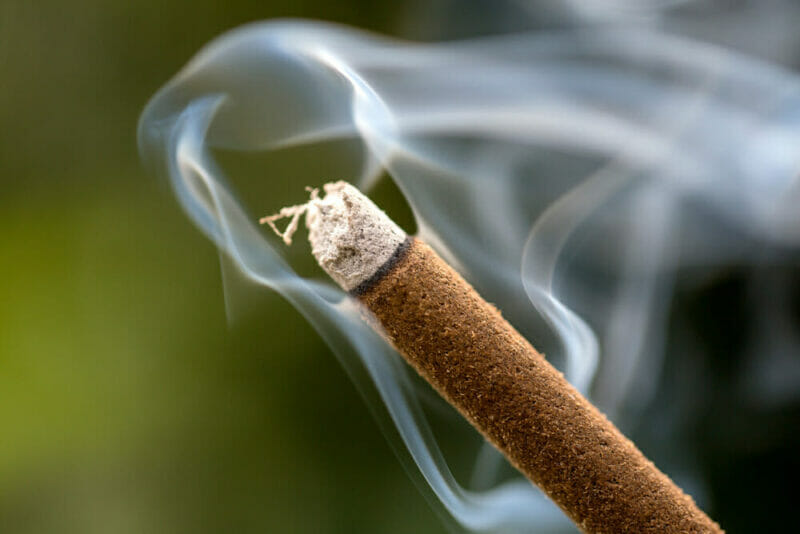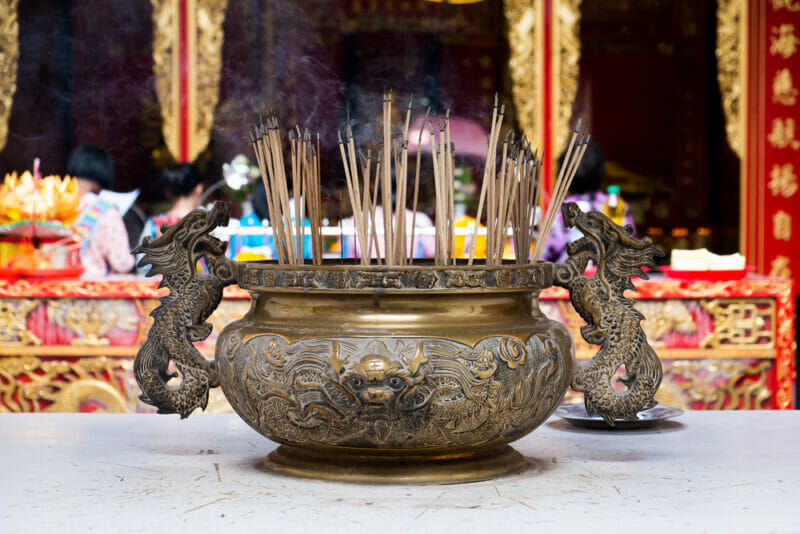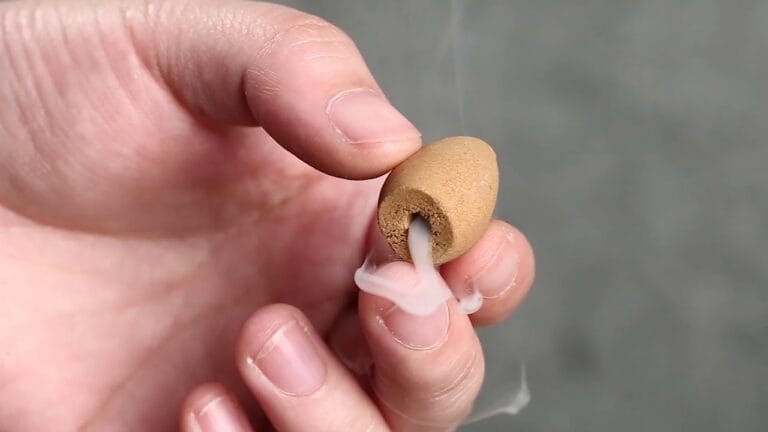What Kind of Incense Is Used in Buddhist Temples?
The use of incense in Buddhist temples is a significant aspect of their culture. However, many may wonder what type of incense is used in these temples.
There are actually a wide variety of incenses used in Buddhism. This blog post will delve into the various types of incense commonly found in Buddhist temples and the ingredients used in traditional Buddhist incense.
The use of incense or perfume is found in every Buddhist school or branch. There are some herb incenses that are burned for purification, but incense is mostly used for creating a meditative and prayerful environment.
The burning of incense not only creates a solemn atmosphere, but also boosts awareness.
Which Type of Incense Do Buddhist Temples Use?
In Buddhist countries, the burning of incense sticks is a centuries-old tradition. Most of the Buddhist temples use sandalwood for incense. On the other hand, Agarwood/aloeswood is the primary incense used in Japan.
Buddhists in western countries are probably most likely to use incense sticks or incense cones, as they are common in Buddhist temples there.
Incense sticks mainly come in two types. The first one is a coreless/solid hard incense stick, and the other one is a bamboo core incense stick.
A coreless/solid incense stick can burn continuously for a long time, but the bamboo-cored incense stick is usually most widely used.
Among the incense sticks commonly used in western countries are those from Japan, Tibet, and India. Based on their smell and quality, they are priced differently.
Japanese incense sticks produce less smoke, while Tibetan incense sticks emit more smoke and last longer.

In terms of quality, Tibetan incense sticks are considered the best. In Tibetan incense sticks, natural herbs, flowers and seeds are used as ingredients.
There are about 28 ingredients that can be used to create these incense sticks. Various ingredients such as agarwood, sandalwood, frankincense, myrrh, amber, pine, and cedar are commonly used, along with snow lotus, saffron, and borneol etc.
Their main component, however, is wood, as in other incense sticks. The wood is first cut into small pieces. In the next stage, they are ground up into a powdery mixture to which the rest of the ingredients are added.
Typically, incense sticks used in Tibetan temples come from Nepal and India. Tibetan medicine practitioners consider these to be especially effective in relieving stress.
Also, these incense sticks are often used during meditation.
In a previous blog post I compiled a list of the best incense sets. You can find it here:
The 9 Best Incense Gift Sets (Plus 2 You Should Avoid)
Incense is most commonly used in Buddhist temples, Shinto shrines and churches as well as many other religious institutions.
Buddhists use it to make an atmosphere that transcends the mundane environment and elevates it into something sacred, similar to the way Christians light incense and candles for a sense of reverence before God or at times of death.

However, certain types of incense can be offensive to people if used improperly or if they cannot tolerate strong scents.
Consideration should be taken into account when using any type of fragrance or chemical substances that might cause harmful effects as well as consideration for those who have more sensitive noses than others do, whether they know about it or not.
Precautions while making the incense
Certain precautions should be taken while making the incense for Buddhist temples.
- First of all, all the natural ingredients such as herbs, aromas and essential oils which are to be added must be in their pure forms. And these should not be made from any artificial or synthetic additives. Moreover, the instruments and pots used while preparing the incense must be clean and rust free as it can add impurities to the incense.
- Further, there is always a traditional formula for these ingredients to be mixed in a particular manner therefore, this point should be kept in mind so as to make the desired aroma.
- After it is being prepared, it must be stored under the suitable environmental conditions for different incenses. And last but not the least it is important to obtain and extract the ingredients only from those sources that are easily available, significant in number and are not in shortage in order to avoid scarcity.
Purpose of incense
In Buddhist temples, incense is offered symbolically to Buddha and other holy creatures. It represents good energy and blessings as well as the purification of mind and body.
In order to create a calming and pleasant environment so that practitioners can perform their rituals and prayers in a satisfying and relaxing environment.
It also makes one feel spiritually connected to God. Likewise, it is thought that the use of incense makes the atmosphere clean and free of bad and evil spirits making the area suitable for religious activities.
Video: Traditions Explained: The History of Incense
Basically, the use of incense in Buddhist temples is one way to create a sense of peace and sanctity.
These scents have been shown to reduce anxiety and stress levels. Buddhist temples mainly use scented wood and herbs to offer a pleasant smelling smoke that is also aesthetically pleasing.
In the following video, you will learn more about the history behind the use of incense in traditional Asian cultures:
FAQs
- Why is incense used in Buddhist temples?
Incense is used in Buddhist temples as a gift to the Buddhist and other Holy beings. It also signifies respect, gratitude and devotion towards them.
- Can anyone burn incense in a Buddhist’s temples?
It is based on each temple’s rule on who should burn the incense but it is usually not restricted for anybody to burn the incense in the Buddhist’s temple.
- What ingredients are used in making incense in Buddhist’s temple?
Natural ingredients such as agarwood, sandalwood, myrrh, amber, pine, and cedar are commonly used in making the incense for the Buddhist’s temple.
- What is the role of incense in Buddhist’s temple?
Incense creates a peaceful and calming environment so that the practitioners can perform their rituals and prayers in a pleasant environment and feel connected to Buddhist and other Holy beings.
Parting Words
Overall, incense holds a significant importance in Buddhist temples representing respect, gratitude and devotion towards Buddhist and other Holy beings. It not only purifies the inner selves and environment but also makes a calming and peaceful theme to encourage spiritual practices.
There are many different types of incense that can be used in a temple, and some are more common than others.
Many Buddhist temples use wood or charcoal incense, but the most important type of Buddhist incense is sandalwood. Sandalwood holds a high place in Indian and Chinese culture as well.
They are often used for prayer ceremonies as well as purification rituals due to their pleasant aroma that has been said to bring tranquility to those who inhale it deeply.
While historically the purpose of these aromatic blends were to create a pleasing environment, they also served a medicinal purpose in that they purify the air and promote good health by eliminating bacteria and germs.
Today many people use this type of incense for their own personal spiritual practices or other healing rituals such as meditation or yoga.







